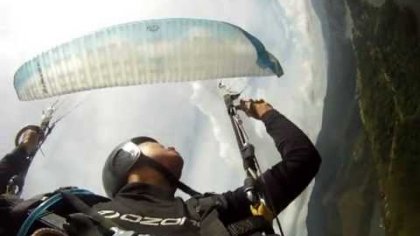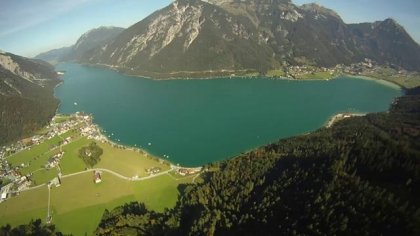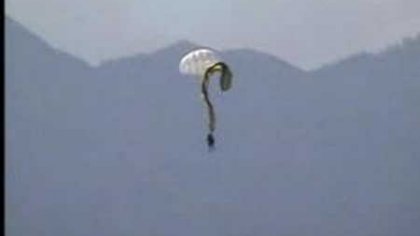19 years ago
Description:
During the Spin one side of the glider turns backward (negative) whilst the other still flying forward (positive) by keeping the negative side under stall point. During the manouvre usually the glider oscillates, the pilot swings a bit forward and backward under it, and the negative side’s tip collapses to the front (not backwards as a normal collapse).
Preparation:
To prevent riser twist, set your harness to sitting position, release the chest strap as much as possible, put your legs under your harness and be ready to turn with your glider. Take one wrap if the brakeline is too long.
Enter:
In the following text I describe a Spin to the left.
Slow down the glider to minimum speed by slowly and symmetrically braking and wait until it stabilized above you (you are not swinging anymore). At the same moment, release the right brake, grab the right riser and pull down the left brake immediately, just as you would do a Full Stall, but only to one side. As the airflow of the left side gone, the glider starts spinning.
Or
Without slowing down the glider, grab the right riser and pull the left brake all the way down. Because you enter the spin from trim speed, you swing out from under the glider (due to the pendulum of your body), and the glider will spinning a bit in front of you for 1-2 turns.
Exit:
Pull down the right brake to stall point and Full Stall the glider to return normal flight. I advise to use this technique at the beginning, cause it’s much easier and safer (you can make a nice symmetrical exit)!
Or
Release the brake when the glider is above or a little bit in front of you, than brake the following surge!
The spin is usually not stable, the glider oscillates, you are swinging under the canopy and the glider slows down and accelerates. Try to exit when the turn slows down, it decreases the danger to get a riser twist and/or an asymmetrical surge.
Or
Release the left brake only a little bit and pull down gently the right at the same moment (take care not to make a Full Stall). As the glider slows down, release the left brake even more. Now the glider stops and shoots forward.
Dangers!
If your body cannot turn or stop as fast as the glider, you can easily end up in a riser twist. If it happens try to lead out the Spin as fast as possible and resolve the twisting by moving your legs or grabbing the lines over the twisting and try to turn back yourself. If you are twisted in two or more times, the brake lines could stuck and you completely loose the control over your glider. In this case, the glider could starts to spiraling down or continue spinning or full stalling. Grab the brakelines above the twist, Full Stall the glider and try to untwist. If you don’t have lot’s of hundreds of meters below you to resolve the problem, don’t hesitate to throw your reserve!
After the exit, the wing has to pick up speed, so don’t brake the surge too hard, otherwise the glider can easily stall again (usually assymetrically)! However if you don’t apply enough brake, you could get big collapses and cravattes!
If you release the brake when the glider is far behind you, and don’t brake it hard enough, you’re in trouble. Such as in Full Stall, the following surge can be so strong, YOU CAN EVEN FALL INTO THE CANOPY!
Do not try this manovure with seated harness because it extremely increases the danger of riser twisting!
Be very confident with Full Stalls before you try this trick.







Latest Comments
"Preparation:
To prevent riser twist, set your harness to sitting position,"
VS
"
Dangers!
Do not try this manovure with seated harness because it extremely increases the danger of riser twisting!"
One of these needs a typo correction. Right?,
Thanks.
In the movie the failure is more interesting than the spin. The most interesting part is the failure of the reserve. When the pilot threw the bag, it went far from the wing and looked ok. Whe it started opening it flew into the glider lines. The problem, to my understanding is that when the reserve got to the lines of the main canopy it was still small enough to get tangled there.
I suppose that the weak point was the speed in which the reserve opened. Had it opened faster it would have been fully inflated by the time it reached the lines of the main canopy.
My conclusion: next time I go to play over water I'm taking a small reserve for fastest deployment - not worried about twisting my ankle there.